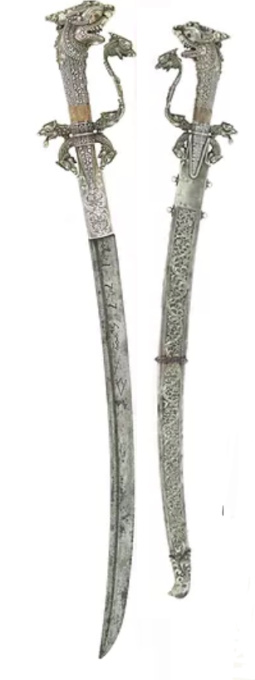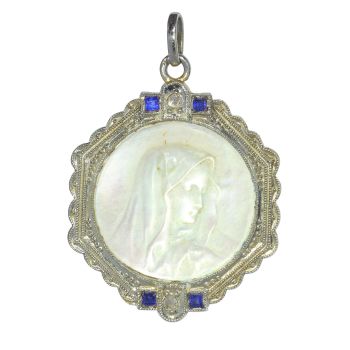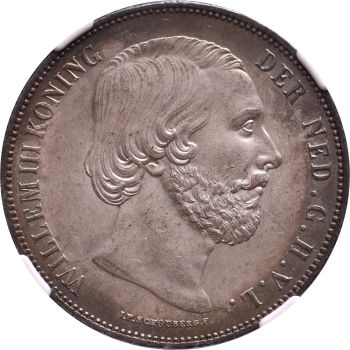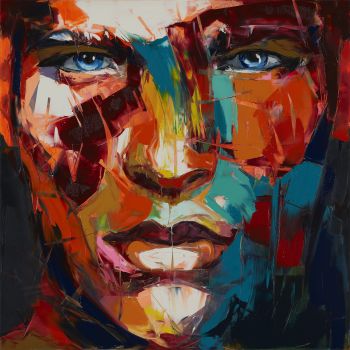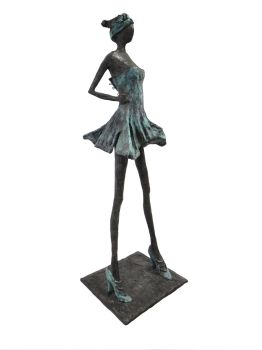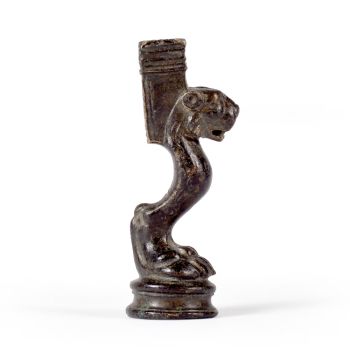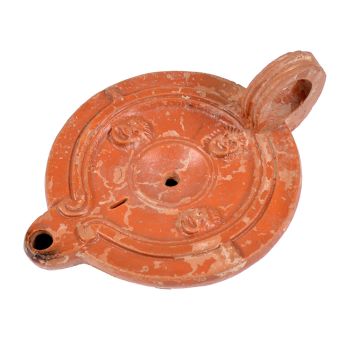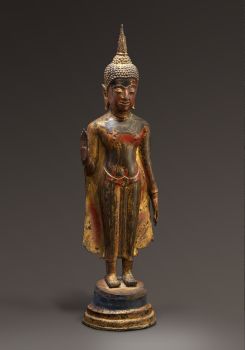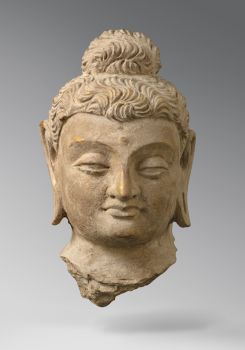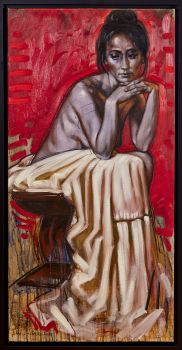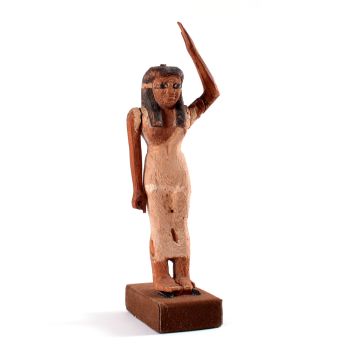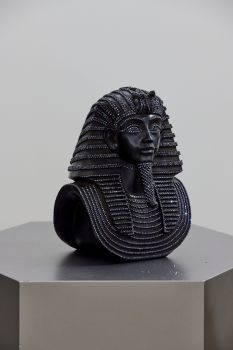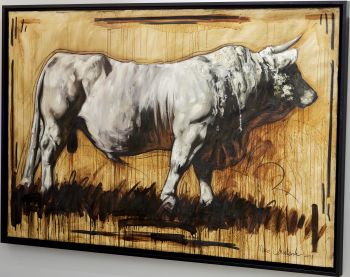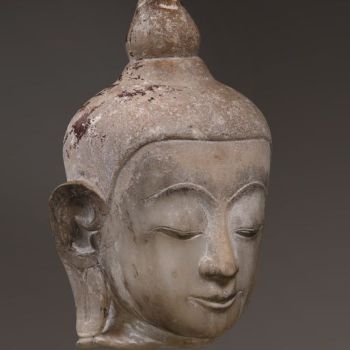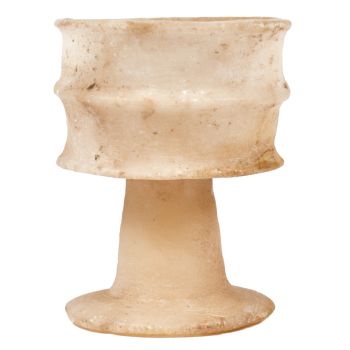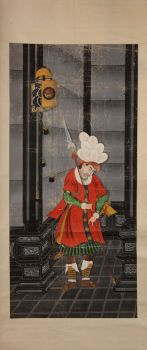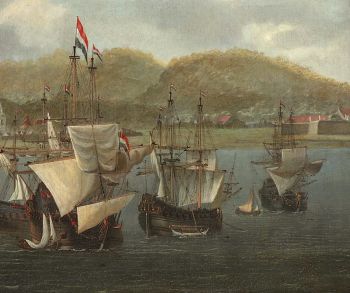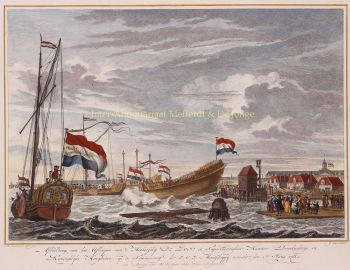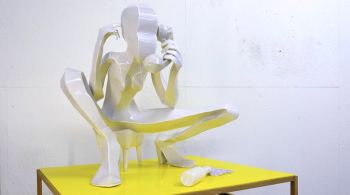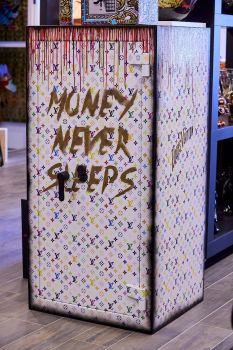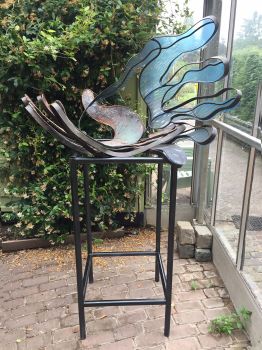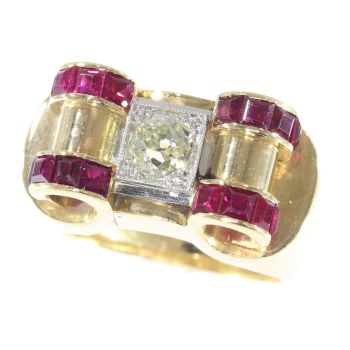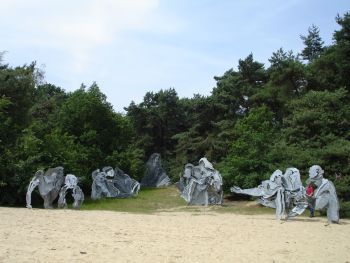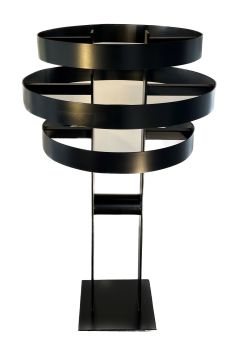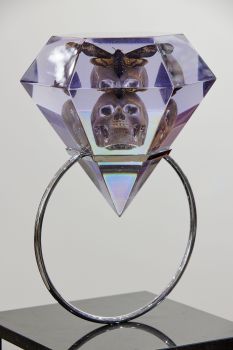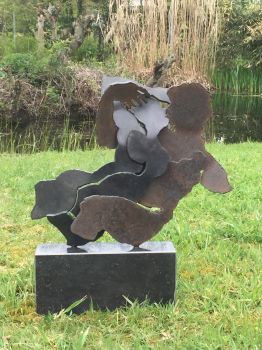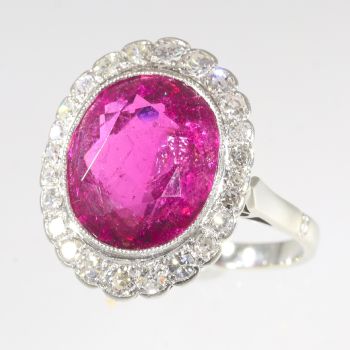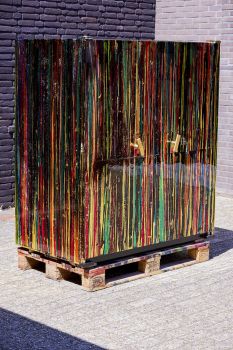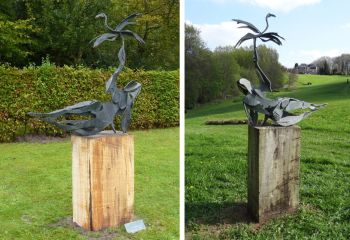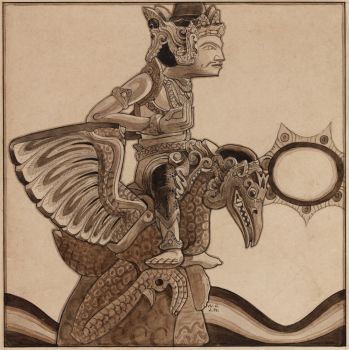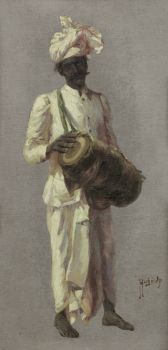A fine ruby inlaid iron, steel, silver, brass, gold Sinhalese Kasthane 1776
Artista Desconhecido
FerroRubiAçoOuroMetalGemstone
100 ⨯ 67 ⨯ 47 cm
Atualmente indisponível via Gallerease
Zebregs & Röell - Fine Art - Antiques
- Sobre arteA fine ruby inlaid iron, steel, silver, brass, gold Sinhalese Kasthane
Kingdom of Kandy, Sri Lanka (Ceylon), the blade marked VOC Amsterdam and dated 1776, the hilt late 18th century
L. 100.5 x W. 67 x H. 47 cm
A beautiful silver-mounted kasthāné with a narrow, curved blade with a single groove on each side. The blade bears the V.O.C. Amsterdam cipher on either side, with the year 1776. Many such marked blades are found all over the former colonies, including Sumatra and Java. It is unclear how they were obtained, as the V.O.C. was not officially selling the blades in these areas. Unlike many highly ornamental kasthāné that are purely ceremonial, this blade is a decent piece capable of actual use.
The silver hilt is typical Sinhalese. Cast out of two halves and worked to finer detail with chiselling in traditional Sinhalese motifs, with remains of parcel gilding. It has the large simha (lion) head pommel with ruby pupils set in gilt copper eyes. The grip is articulated with cutouts for the fingers, leading up to an octagonal gilt copper ferrule.
The crossbar terminates in a sérapéṅdiya on one side, the other side has a makara head from which the knucklebow emerges, which in turn ends in another sérapéṅdiya head. On the front of the knucklebow is a figure of Lakshmi, goddess of abundance and fortune. She is sat in the lotus position, holding two sprays of vegetation. Above the guard section emergy two makara heads, they neck leading their heads back towards the base of the blade.
The wooden scabbard is clad in silver, worked in repousse with traditional Sinhalese liya-vela, a decorative repetitive vegetal motif that sprouts from the head of a sérapéṅdiya near the tip. The scabbard endpiece is a highly stylized bird's head, with liya-pata, Sinhalese traditional curly elements.
The scabbard has a band in the middle beset with 13 pink rubies. Near the mouthpiece is engraved ".A:M.", repeated in the knucklebow. Possibly the initials of a previous owner. By the late 18th century, the western script was adopted in Sri Lanka as well, and male names often started with an A so it could have well been the initials of a local. The scabbard has four loops by which it was attached to a sash worn diagonally over the body.
A very nice example of a classic Sinhalese kasthāné of the silver type that was presented by the king of Kandy to Adigar at their appointment. It has the rare and desirable additions of a band of rubies on the scabbard and a dated, V.O.C. marked blade that put it firmly in the 18th century. In addition, there are initials that may help a future owner in further investigating the sword's context. - Sobre artista
Pode acontecer que um artista ou criador seja desconhecido.
Algumas obras não devem ser determinadas por quem são feitas ou são feitas por (um grupo de) artesãos. Exemplos são estátuas dos tempos antigos, móveis, espelhos ou assinaturas que não são claras ou legíveis, mas também algumas obras não são assinadas.
Além disso, você pode encontrar a seguinte descrição:
•"Atribuído a …." Na opinião deles, provavelmente uma obra do artista, pelo menos em parte
• “Estúdio de…” ou “Oficina de” Em sua opinião um trabalho executado no estúdio ou oficina do artista, possivelmente sob sua supervisão
• "Círculo de ..." Na opinião deles, uma obra da época do artista mostrando sua influência, intimamente associada ao artista, mas não necessariamente seu aluno
•“Estilo de…” ou “Seguidor de…” Na opinião deles, um trabalho executado no estilo do artista, mas não necessariamente por um aluno; pode ser contemporâneo ou quase contemporâneo
• "Maneira de ..." Na opinião deles, uma obra no estilo do artista, mas de data posterior
•"Depois …." Na opinião deles uma cópia (de qualquer data) de uma obra do artista
• “Assinado…”, “Datado…” ou “Inscrito” Na opinião deles, a obra foi assinada/datada/inscrita pelo artista. A adição de um ponto de interrogação indica um elemento de dúvida
• "Com assinatura ….”, “Com data ….”, “Com inscrição ….” ou “Tem assinatura/data/inscrição” na opinião deles a assinatura/data/inscrição foi adicionada por outra pessoa que não o artista
Você está interessado em comprar esta obra de arte?
Artwork details
Related artworks
Artista Desconhecido
A large wall map of Asia by Nicolas de Fer 1647 - 1720
Preço em pedidoZebregs & Röell - Fine Art - Antiques
1 - 4 / 12Artista Desconhecido
The bell of the VOC fortress in Jaffna, Sri Lanka1747
Preço em pedidoZebregs & Röell - Fine Art - Antiques
 Com curadoria de
Com curadoria deDanny Bree
1 - 4 / 16Artista Desconhecido
The bell of the VOC fortress in Jaffna, Sri Lanka1747
Preço em pedidoZebregs & Röell - Fine Art - Antiques
 Com curadoria de
Com curadoria deDanny Bree
Shiba Kokan
Pintura de um holandês fantásticoearly 19th
Preço em pedidoZebregs & Röell - Fine Art - Antiques
1 - 4 / 24- 1 - 4 / 24
 Com curadoria de
Com curadoria deDanny Bree
Dutch School
Chegada de um índio oriental holandês na Baía da Mesa18th century
Preço em pedidoZebregs & Röell - Fine Art - Antiques
1 - 4 / 12

